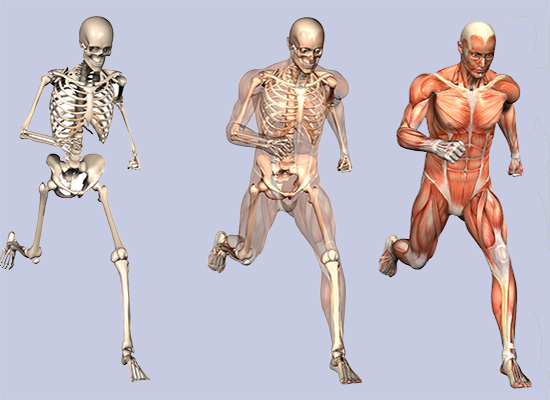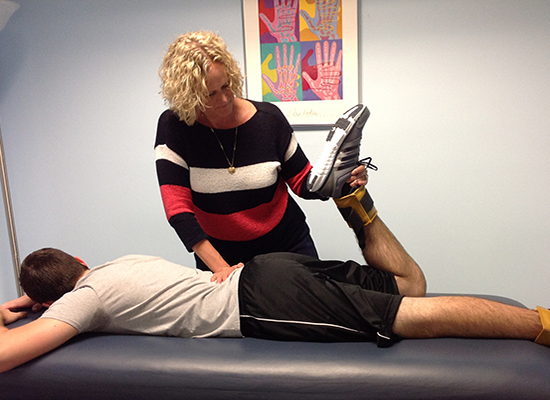Physical Therapy Is Essential in Recovery After Joint-replacement Surgery
Whether as the result of aging or past injuries, we do damage to our bodies over the years, and often times our joints take the brunt of the damage. Over time, this damage can result in chronic pain due to the degeneration of the joint and osteoarthritis. The hip and knee joints are most commonly affected by this degeneration, and joint replacement is often recommended.
With degeneration of the joint and the onset of osteoarthritis, patients experience more pain, and movement becomes more dysfunctional. As the damage progresses, many note increased pain with weight-bearing activity, stiffness and loss of motion, swelling, and difficulty with walking and stairs, among other issues. These deficits can impact patients’ activities of daily living, resulting in difficulty dressing, bathing, and taking care of themselves normally.

When performing a total hip (THR) or knee replacement (TKR), the surgeon removes damaged bone and replaces the joint with a metal prosthesis. In the case of the ball-and-socket joint in the hip, the surgeon removes the acetabulum, or socket, from the pelvis. He or she also removes the head of the femur or the ball located at the top of the thigh bone that articulates with the pelvis. In the case of a knee replacement, the surgeon removes the end of the thigh bone, or femur, and the top of the shin bone, also known as the tibia. The surgeon then fits and places a prosthesis appropriate to the patient.
Physical Therapists are movement experts and can help guide the patient’s recovery to promote a return to normal movement, activities, and hobbies. After surgery, the patient will likely experience joint stiffness, lower extremity swelling, and weakness. These deficits may cause a patient to require ambulatory aides, including a walker or cane. At this point in the journey following joint replacement, physical therapy can help to address these deficits and ease the road to recovery. Despite these symptoms, patients will be able to begin walking and exercising right away.

Physical Therapists are instrumental in providing patients with education following surgery. A therapist may instruct patients to avoid certain movements following a hip replacement, as these precautions are placed by the surgeon. A therapist may also provide useful bits of education to help patients shower, get out of bed, or perform other activities of daily living more easily. Education may also be provided on correct sequencing and safety when ambulating with an assistive device. This will help promote confidence in balance and stability while also facilitating independence. Therapists may also provide useful advice on how to ascend and descend stairs appropriately for a patient’s level of function. Therapists can provide helpful tips and tricks to make each daily activity easier and less pain provoking.
Exercise Prescription
Often times following a replacement, the surgeon may provide a patient with a printout or an app to progress through an exercise in the weeks following surgery. While these exercises may help in promoting recovery, there is usually no one to ensure the correct performance of these activities. A physical therapist can provide in-person instruction, which will allow for the modification of exercises in order to meet the specific needs of a patient.
Hip and knee weakness are commonly seen prior to surgery. “Prehab” PT provided before surgery can promote strength gains, improve function, and facilitate a quicker recovery. However, surgery often exacerbates the severity of the weakness. A therapist will examine and prescribe specific exercises to target weak muscle groups to gradually reduce the severity of the limp and allow progression to ambulate without the use of a device.
Stairs are often a challenging task after replacement surgery. Immediately following a replacement, patients may be unable to navigate stairs with a normal gait. Descending stairs is often most difficult for patients due to deficits in range of motion and strength. A therapist will initially focus more heavily on maximizing range of motion and will follow up with exercises to help strengthen the patient’s leg within his or her available range. This progression will allow patients to more successfully use the surgical leg and return to their normal gait pattern.
As patients progress through their recovery, a therapist will initiate exercises to target balance, functional training, and activity-specific training. Depending on patients’ function prior to replacement, they may need more specific interventions to address work-related tasks. A therapist may also challenge patients with more activity-specific exercises to promote a return to their choice of exercise or other recreational activity.
Hands-on Care
Hands-on care is just as important in promoting recovery as exercise is. Physical therapists also have extensive training in manual
skills to reduce pain and swelling and enable patients to regain mobility. Following a joint replacement, a therapist may perform various types of massage to promote decreased muscle soreness and reduce swelling. These can help mitigate pain and swelling, which are often limiting factors in movement and function. Therapists may also use hands-on techniques to promote improved joint mobility, range of motion, and decreased pain.
If you or a loved one are experiencing chronic joint pain or are undergoing a joint replacement in the future, remember that physical therapy can provide pain relief and maximize function. Prehab ahead of a replacement can be helpful to lessen the rehab course and maximize function prior to surgery. Under the care of one of our WWSPT therapists, you or your loved one can be guided through the rehab process with the goal to help return to a prior level of function.

